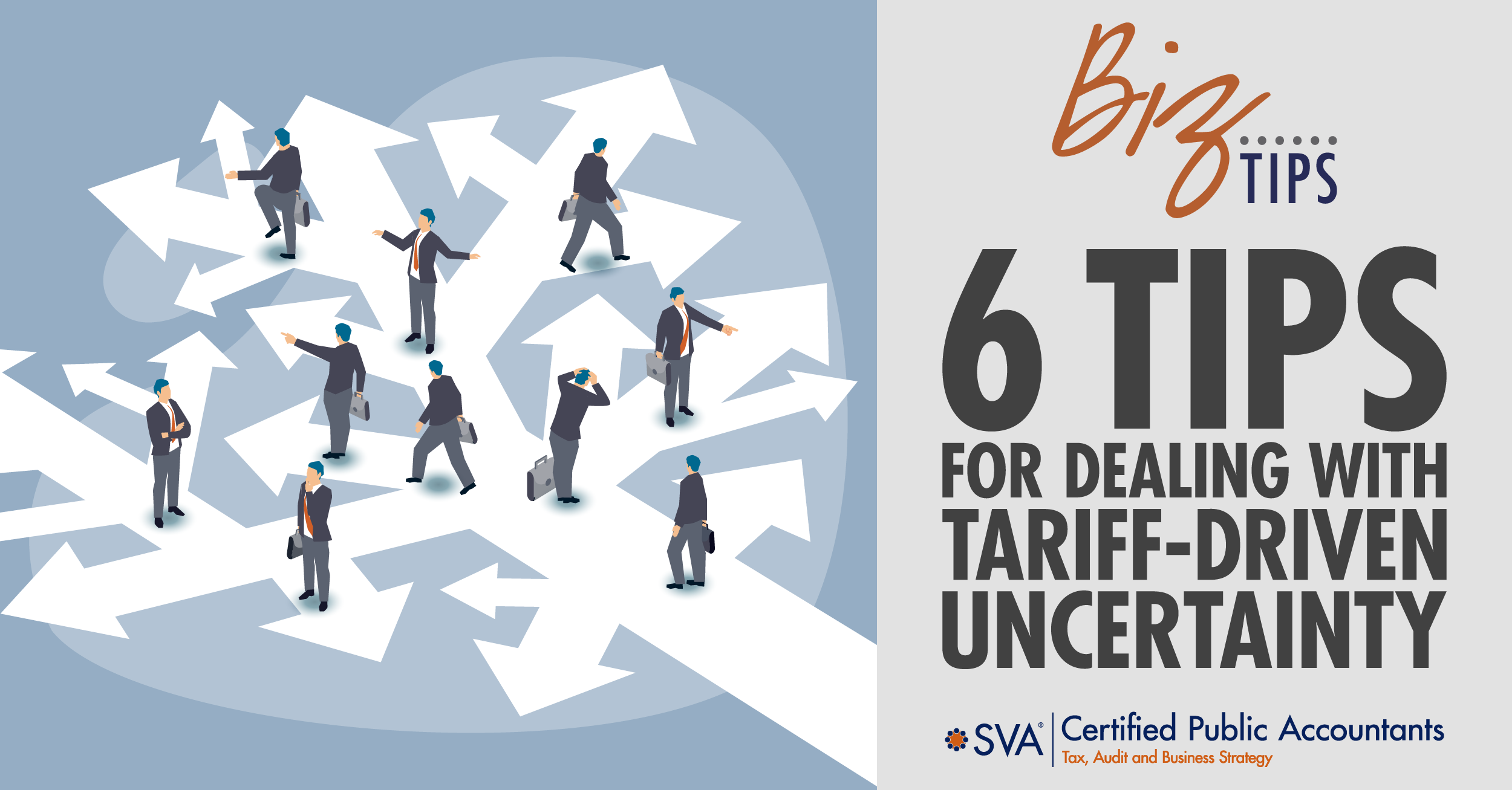Tariffs can cause plenty of uncertainty for business owners. Whether they’re already affecting your operations or you’re simply trying to prepare for what might come, a proactive strategy can help you stay steady—even when trade winds shift.
6 Ways Businesses Can Navigate Tariff-Related Challenges
Here are six practical ways to help your business navigate the ups and downs of tariff-related challenges:
1. Revisit Your Supply Chain
Start with visibility. Where are your raw materials, components, or finished products coming from? Are any of those suppliers located in countries currently subject to tariffs?
A thorough review of your supply chain can help you identify areas of risk. From there, you can explore options like:
- Diversifying your supplier base
- Sourcing from tariff-free regions
- Reshoring production where it makes sense financially
This isn’t something you need to overhaul overnight—but keeping a pulse on where you may be vulnerable is the first step toward managing it.
2. Take a Fresh Look at Vendor Agreements
Tariffs can increase the cost of doing business—but the fine print in your contracts could determine who absorbs those costs.
Now’s a good time to review your vendor agreements for any terms related to price adjustments, delivery delays, or pass-through costs. Ask yourself:
- Do I have flexibility if costs rise suddenly?
- Can I renegotiate pricing terms with key suppliers?
- Are there risks in my current contracts I haven’t considered?
Having more agile contract terms can make it easier to adapt when conditions change.
3. Double-Check Your Product Classification Codes
Not all goods are treated equally when it comes to tariffs. The Harmonized Tariff Schedule (HTS) codes you use to classify your products directly impact your duty rates.
Sometimes, simply revisiting how you classify your products can uncover opportunities to reduce what you owe. It’s worth working with a customs broker or tax advisor to ensure your codes are accurate and up to date.
This is especially helpful if:
- You’ve added new products recently
- Your current classifications were done quickly or haven’t been reviewed in a while
- You’re importing a product that has changed in how it's manufactured or used
(Download Video Transcript)
4. Explore Duty Drawback Opportunities
If your business involves importing goods that are later exported (either as-is or as part of another product), you may be eligible for duty drawback—basically, a refund of certain duties you paid at the time of import.
While the process involves paperwork and compliance requirements, the potential savings can be worth it. This is especially relevant for manufacturers, wholesalers, and distributors with cross-border operations.
A tax advisor familiar with duty drawback programs can help you determine if this applies to your business and how to get started.
5. Reevaluate Your Pricing Strategy
Rising input costs from tariffs can squeeze margins, but that doesn’t mean you have to absorb it all.
Instead, think through your pricing strategy:
- Can you pass some of the increase to customers?
- Are there bundle or subscription options that soften the impact?
- Do you need to revise contracts or quotes that are locked in at older pricing?
If you’re making changes, communication is key. Be upfront with your customers about why adjustments are happening. Most understand that tariffs are beyond your control—and transparency builds trust.
6. Talk with an Advisor
The impact of tariffs can reach into areas like tax planning, budgeting, and financial reporting. Working with a tax advisor gives you a clearer picture of where you stand and what options are available.
An advisor can help you:
- Identify tax strategies to offset higher costs
- Evaluate opportunities for refunds or incentives
- Analyze the total cost of your goods
Even if you’re not feeling the pinch yet, it’s worth having a conversation to get ahead of the game.
Make Smart Adjustments
Tariffs may be unpredictable, but your response doesn’t have to be. A few smart adjustments can help your business stay on solid footing, even when the landscape changes.
© 2025 SVA Certified Public Accountants

